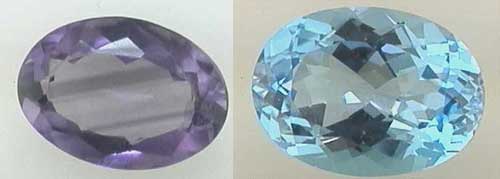How Are Diamonds Made? Natural vs Lab-Created Explained
Two Paths, One Diamond Not all diamonds come from the same place — but they all start the same way. Pure carbon, crystalized under immense pressure and heat. Whether it…
Cut right, the stone will SING! Cut poorly, it is just another window, perhaps with a little sparkle around the edges.

Typical “native cut” stones. Notice the brilliance around the edge of the stones, but also notice the “window” in the middle of the stone where you can see straight through the stone. Also notice the black areas of “extinction”. They are cut to retain weight, not to be beautiful.
What’s a poor rookie to do?
First!
LOOK!
Get out there and look at LOTS of stones, then look some more. You will quickly see that the vast majority of what is being shown to you is garbage. Ask to see some well cut stones of high quality. Be prepared to go to several stores until you find one that can show you the goods! You can probably save yourself a lot of time if you just start at some of your better stores and skip the mall chain stores.
I am proud to feature the artistry of Richard Homer, one of the world’s premier lapidary artists. When you see what he and others like him do with stones, you will never be happy with native cut stones again. (Native cut is how we refer to stones that have been cut in the country of origin with an eye to retaining weight rather than releasing the beauty of the stone.) Here is an example of a typical native cut stone versus what it looked like after recutting. Which would YOU prefer?

Before 3.22 carat (left) and now 2.88 carat (right). Side (left) and top (right) views.